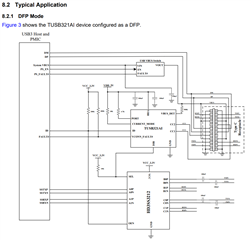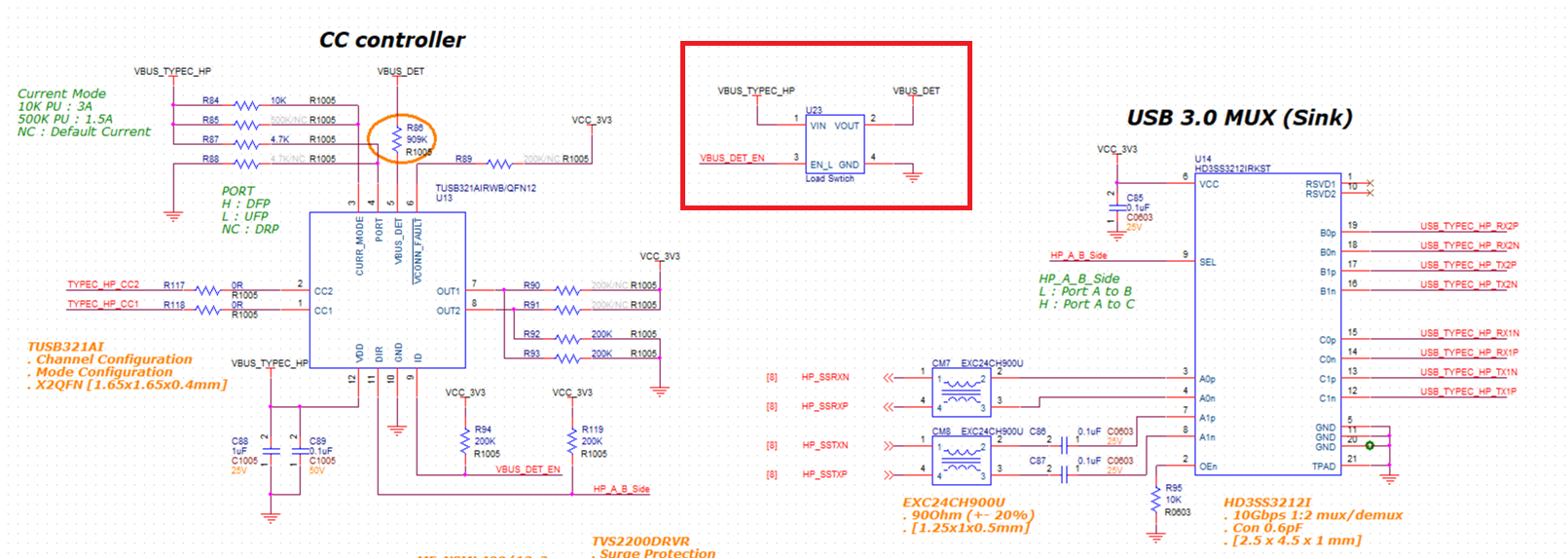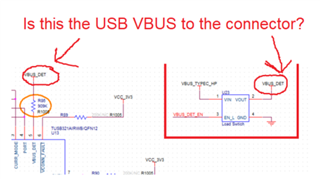Other Parts Discussed in Thread: HD3SS3212, TPS22916
Dear TI experts,
My customer tests their own PCB with TUSB321AI.
the connection is as below.
[Sink;Scanner Device;USB C is controlled by ST MCU] <--USB C Cable--> [Source;Power Gender;USB C is controlled by TUSB321AI and HD3SS3212]
the problem is, when they flip the cable on sink side, CC1/CC2 voltage is normal and works well. but they flip the cable on source side, CC1/CC2 voltage is normal but DIR pin is always high.
if they connect source side on A, the voltage is as below;
CC1:1.77V, CC2:4.92V, DIR:3.35V
if they connect source side on B, the voltage is as below;
CC1:4.92V, CC2:1.77V, DIR:3.35V
related on this, I fould a thread below.
this thread says that DIR pin change is also related to VBUS. but I cannot understand exactly. (VBUS is not just the input voltage? should we control it?)
I attach the waveform and schematic for your convenience. (schematic will be deleted after your support is done for my customer.)
And please let me know if you need more information about it.
Best regards,
Chase





